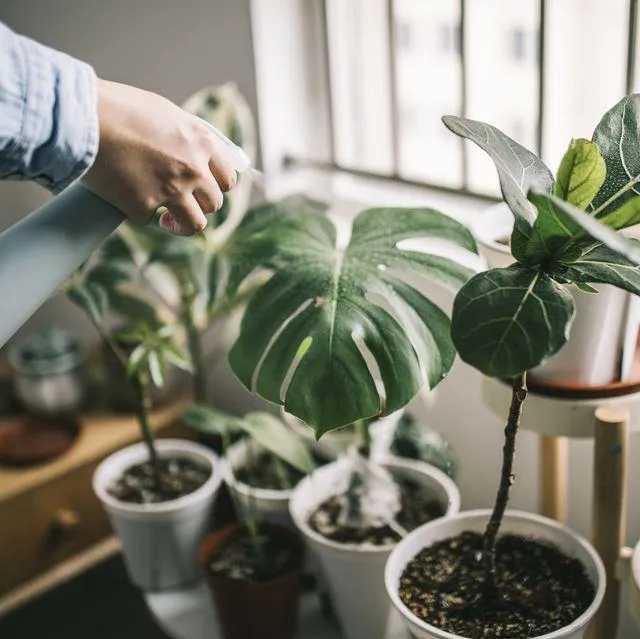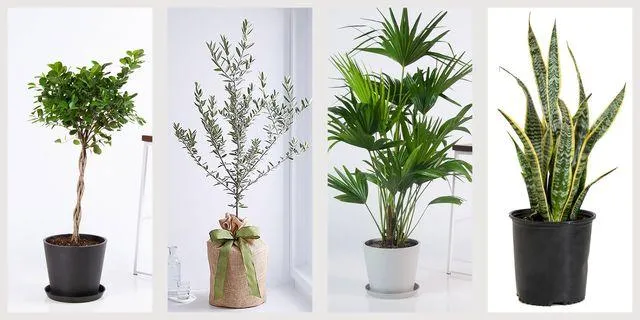The Best Small Trees for Growing Indoors
If you want to bring a bit of nature inside but don’t have space for a large tree, small indoor trees are a great option. From my experience living in small apartments, having a tiny tree can really enhance the aesthetic and atmosphere of a room. In this article, I’ll cover the top small tree varieties suitable for indoor growth, their care requirements, and other tips to help you choose and care for a miniature indoor tree.
Popular Small Tree Varieties
- Jade Plant: One of the easiest and most popular small indoor trees is the jade plant. Its thick succulent leaves hold water well, so it’s quite tolerant of infrequent watering. Jade plants grow slowly to about 3 feet tall and prefer bright indirect light. They are hardy and make a nice accent piece.
- Dwarf Ficus: Ficus trees come in many small varieties perfect for homes and offices. They range from 3-6 feet tall and have thick, glossy green leaves. Most ficus prefer medium to bright indirect sunlight and moderate watering. Pests are not usually an issue with dwarf ficus.
- Mini Bonsai: For those wanting the look of a tree in miniature, bonsai is a fun option. Many varieties like juniper, elm, and ficus bonsai stay small and make neat display pieces. They require training, regular trimming, and bright light to develop their artistic shape. Bonsais demand consistent care but reward growers with their miniature landscapes.
There are also other small indoor tree varieties to consider like jasmine, schefflera, hawthornia, and some dwarf citrus selections. When choosing a type, consider the light and space you have available as well as your care preferences. Low maintenance varieties tend to be more forgiving for indoor growing.
Care Requirements for Small Indoor Trees
Proper care is important to keep your miniature tree healthy inside. Here are some basics:
– **Watering:** Most prefer to dry out slightly between waterings. Check soil moisture frequently and water when the top inch dries. Some like jade only need water every 2-3 weeks.
– **Light:** Bright indirect sunlight several hours daily. South or east windows provide the best conditions. Supplement with grow lights if needed.
– **Humidity:** Mist leaves and group plants together to raise ambient humidity levels, which many trees require. Consider a pebble tray or humidifier.
– **Fertilizer:** Apply liquid fertilizer diluted to 1⁄2 strength every 2-4 weeks during spring/summer.
– **Pruning:** Trim as needed to shape and control size. Remove dead or diseased portions immediately.
– **Repotting:** only when roots fill the container, using a well-draining soil mix.

Controlling pests and signs of stress like leaf drop using proper care will keep your small indoor tree thriving for years. Regular maintenance is key for their long-term health in the home environment.
Ideal Indoor Growing Conditions
When selecting a spot for your small indoor tree, choose a location that basically meets their lighting and space needs. Here are some additional tips:
– East or west-facing windows provide balanced light. South windows may require filtering or moving the tree further back.
– Avoid direct sunlight on tree leaves, which can scorch them.
– Provide at least 6 inches around the tree’s perimeter for sufficient indirect light penetration.
– Humidity lovers appreciate bathrooms or near the kitchen.
– Shelter trees from temperature fluctuations and drafts near doors or vents.
– Tabletops or bookshelves near windows work for smaller trees. Larger specimens suit patios or lower storeys.
– Group plants together to increase ambient humidity for their mutual benefit.
Consider any decor near the tree as well, in case the branches fill out fully. With the right microclimate conditions, most trees thrive indoors for years. Evaluating the growth space is half the battle for success.

Personalizing Your Miniature Tree
Part of the fun of indoor bonsai and small trees is styling them uniquely. Here are some ideas to customize the look:
– Choose alternate plant containers like glass bottles, ceramic pots, or rustic wooden vessels. Terracotta works well too.
– Add colorful stones, glittering pebbles, or moss to the soil surface for visual appeal.
– Use tree tags, beads, or miniature novelty embellishments as tree “ornaments”.
– Style optional guy wires and stakes attractively to seem peaceful like in nature.
– Seasonally swap out decor themes near the tree for holidays or reunions.
– Photograph your tree’s progress annually for memory keeping. Isn’t it rad to see how far they’ve come!?
– Give it a special spot of honor, like on a plant stand near your favorite reading nook.
Personalizing trees with simple tweaks makes them charming conversation pieces that bring joy for years. I hope these tips will help you select and care for a terrific small tree to enjoy indoors! Let me know if you have any other questions.
Top Indoor Trees for Small Spaces
| Tree | Size | Water Needs | Sunlight | Care Level |
|---|---|---|---|---|
| Chinese Evergreens | Small to medium | Moderate | Low to medium light | Low maintenace |
| Bonsai | Miniature | Frequent light watering | Low to medium light | Intermediate care |
| Peace Lillies | Small | Water when soil is dry | Low to bright indirect light | Easy care |
| Snake Plants | Tall, but narrow leaves | Infrequent watering | Low light tolerant | Very low maintenance |
| Pothos | Vining trailer | Let soil dry slightly between waterings | Low to bright indirect light | Easy care |
FAQ
-
What types of small trees can I grow indoors?
There are quite a few types of small trees that do well inside. Some popular choices are bonsai trees, dwarf fruit trees like dwarf apples or oranges, miniature roses, jade plants, and succulents. At the same time, ficus, fig trees, and dwarf banana plants also tolerate indoor conditions pretty well despite their bigger size.

-
What size pot do I need?
The size of the pot depends on the size of the tree’s root ball. Basically, you want to go up only one pot size at a time for most small indoor trees. Kind of like Goldilocks said, not too big but also not too small. As a general guide, the pot should be around 2-3 inches larger than the root ball.
-
How much sunlight do they need?
Most small indoor trees do best in bright, indirect sunlight. Full sun can scorch their leaves. As the old saying goes, “too much of a good thing.” Put them in an east or west facing window to catch the morning or afternoon rays. Strong fluorescent lights can also work if you don’t have good natural light. I guess the moral of the story is go light, but not too light!
-
How often should I water?
The frequency of watering depends on the type of tree and growing conditions. As a rule of thumb, check the soil daily. When the top inch feels dry, it’s time to water. During hot or dry weather, you may need to water every few days. Conversely, cut back in cool or humid conditions. Basically, stick your finger in the soil and use your judgment. Overwatering can kill indoor trees just as fast as underwatering!
-
What’s the best fertilizer?
Many indoor tree owners swear by diluted liquid fertilizers given once a month during the growing season. Alternatively, you can use a diluted soluble powder or granular fertilizer according to package directions. Perhaps the brand doesn’t matter so much as getting the right balance of major nutrients – nitrogen, phosphorus, and potassium. No matter the method, less is more with fertilizing potted trees. Too much of a good thing and all that.

-
How do I prune or trim them?
Pruning indoor trees is necessary to maintain their shape and size. Cut away dead, damaged or diseased wood using clean, sharp pruners. You can also shape the plant or remove leggy growth. However, be careful not to take too much off at once. It’s better to do light pruning several times a year versus heavy pruning once annually. Start training your trees when young for the best established structure as they grow.
-
What are some common problems?
Pests like spider mites, aphids and scale can plague indoor trees. Watch out for leaf drop too, which can indicate overwatering or nutrient issues. On the other hand, brown leaf tips signify underwatering. Root rot is another awful problem caused by soggy soil. When in doubt, a qualified plant expert can diagnose what ails your tree. With regular care and feeding, most problems can be avoided or treated.
